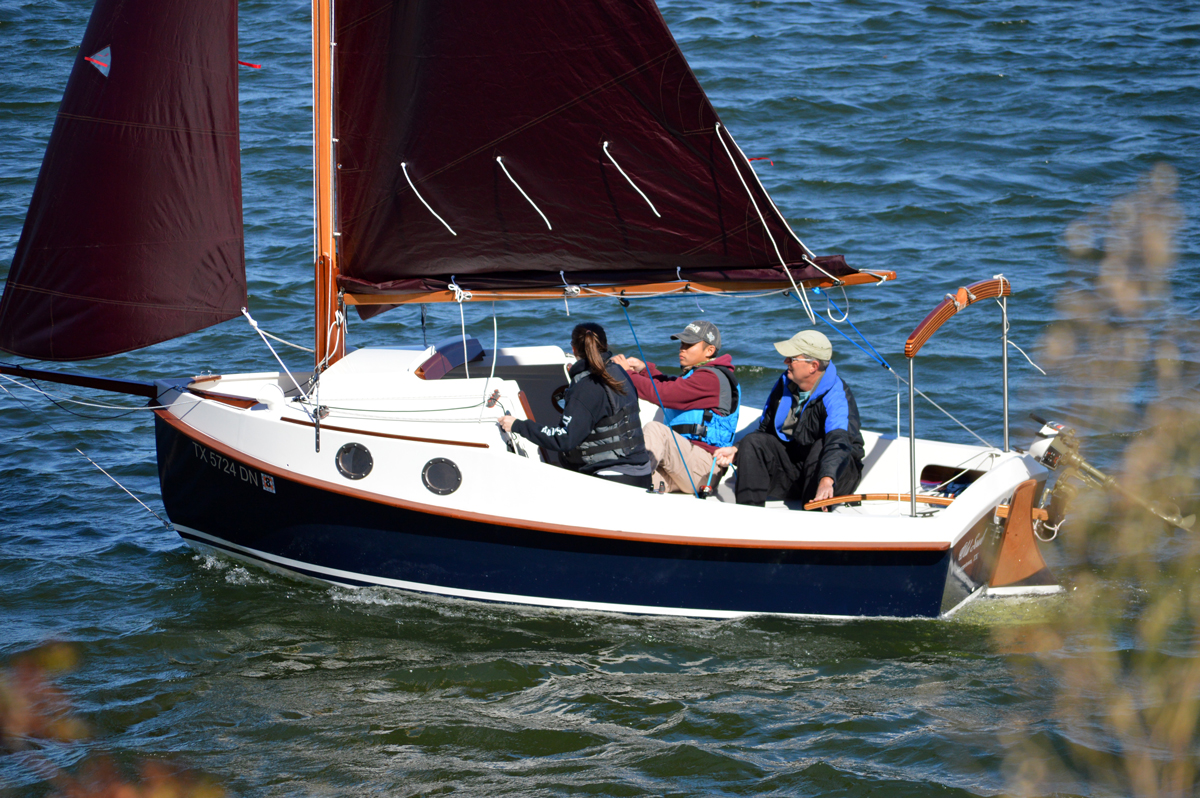 |
| Cradle Bracing |
You can't see much of the cradle in this shot. What you can see is the bracing that is holding the cradle pieces upright and properly spaced. You can also see part of the keel and centerboard trunk which have been dropped into slots in the cradle. The cradle helps with assembling the boat--holding the panels in place and in proper alignment while they are stitched together.
 |
| Caster Under Bracing |
You can see in this shot that I have deviated from the instructions a little by installing casters under the cradle bracing. The casters only raise the cradle by about 1/2". They will enable me to move Jan's car out of the garage and roll the boat out where I can work on it. When I have finished for the day, all I have to do is roll it back against the wall and move Jan's car back in the garage.
 |
| Aft Keel Cap Glued and Clamped |
The aft section of the keel has a cap that covers both the lead-filled area and the hollow area. It is glued in place and sealed so no water can ever get in. I "laid" the keel in 2013, so I sealed a 2013 penny inside it--supposed to be good luck.
Shown here I have a bunch of clamps in place to hold the keel sides against the cap while the glue cures. In the foreground is the little electric heater that has done a very good job of keeping the garage temperature warm enough for curing epoxy.
 |
| Keelson Glued and Clamped |
The keelson (keel's son) has been glued and clamped to the top of the keel. In this shot you can see most of the keelson and a good bit of the cradle.
 |
| Aft End of Keel and Keelson |
 |
| Forward End of Keelson |
Here's a closer shot of the aft end of the keelson. I'm really glad to have this part of the work finished. My next few steps will be to stitch the bilge panels and side panels in place, followed by the transom. When I get those parts in and glued, I'll really feel as if I'm starting to get somewhere.
The manual calls for gluing the keelson in place about 20 steps before I did. This picture of the forward end of the keelson shows you why I decided to wait. The keel itself weighs about 150 pounds or more and there is no way that skinny little piece would not have been broken off during one of the times I had to move the keel or when I wrestled it onto the cradle and dropped it in place. The clamp on the tip is to add a little weight during the epoxy cure.

No comments:
Post a Comment